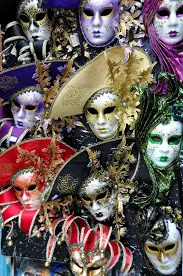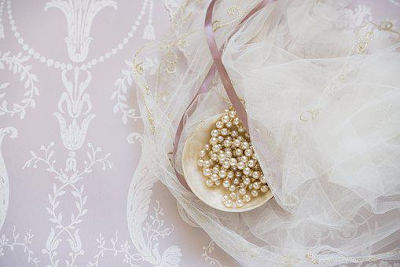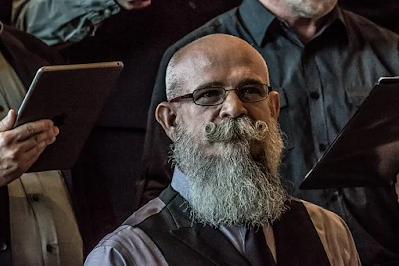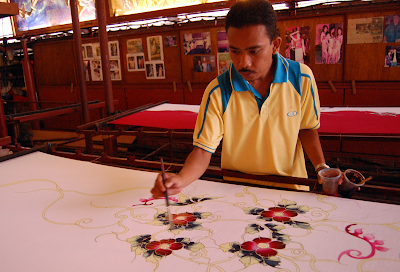Featured
- Get link
- X
- Other Apps
APPEARANCE
The word "appearance" is often used to describe the visible qualities of a broad variety of items in the environment, including humans, plants and animals, geographical and atmospheric circumstances, and structures, to mention a few.
This post, however, will be confined to a discussion of appearance in connection to the human body, as well as items put on or around it that serve as communication stimulus.
Humans have the capacity to communicate in a variety of ways, frequently at the same time.
Appearance is commonly employed as a sort of nonverbal communication as the major focus of attention or in conjunction with other types of communication due to visual qualities and the versatility with which they can be organized to express numerous meanings.
The Body and the Clothes.
For the sake of research and analysis, appearance may be divided into two categories: body and clothing.
Because each has its own set of traits, it's worth evaluating them separately before looking at how they're connected.
The part of the body.
During the communication process, a broad variety of visible physical characteristics serve as triggers.
Body shapes, body movements, body surfaces, and facial configurations are the four basic categories.
Body forms comprise characteristics relating to the general structure of the body in a fixed posture, as well as the structure of distinct components such as the head and limbs, each of which delivers a different kind of stimulation in appearance.
Body shapes are among the most captivating parts of appearance since they involve size, shape, and mass.
The term "body movements" refers to the interactions between movement and the whole body as well as specific body sections.
This category includes gait, hand gestures, shoulder shrugs, nods, and pelvic motions.
The pace and rhythm of bodily movements are often used to create dynamic effects in appearance.
The characteristics of coverings of the general body and its sections, such as the color and texture of skin and hair, fall under the category of body surfaces.
Body surfaces may be among the most sensual features of appearance because they appeal to both the senses of touch and sight.
Facial configurations refers to the shapes, movements, and surfaces that are specific to the face.
This category is an amalgamation of features that are comparable to those in the other categories but on a smaller scale, since the face is made up of numerous shapes, has the ability to move, and has color and texture in skin and hair.
However, since the face is such an expressive aspect of the body and frequently acts as a main source of stimuli in appearance, it's worth considering facial configurations as a separate category from its equivalents in total body composition.
Each of the four kinds of bodily component may be broken down further into basic bits known as elements.
Each has the potential to be a prominent component of look in and of itself, in addition to contributing to the whole of a significant body characteristic.
Eye movements, for example, are part of the mix of factors that make up the general features of facial configurations, but they might draw extra attention when they come in the form of unexpected winks or blinks.
Skin color and texture are similarly integrated components of body surfaces, but they may also be dominating qualities of appearance when they stand out for some reason.
Because the notion of garment had not yet emerged, ancient look was exclusively centered on the body.
However, there is enough evidence that the body was altered in numerous ways prior to the adoption of clothes, even in the early years.
Natural substances were found that could be used to alter the color and texture of skin and hair, and technological advancements were created that could alter the body's size, shape, and features.
It's all about the clothing.
New means of preserving and augmenting the body started to develop as understanding of materials expanded and abilities in procedures and techniques improved.
Despite the fact that historians have classified such improvements in a variety of ways, they are referred to as attire in this section.
Objects of clothing and articles of decoration are the two basic types of dress characteristics.
The phrase "clothing" refers to goods that are worn on or around the body to provide comfort or protection, while "adornment" refers to objects that are worn on or around the body to enhance it.
However, the distinction between clothes and decoration is not always evident since clothing may serve as ornament and adornment can serve as clothing in some instances.
The categories of clothing and pieces of ornamentation may be considered in the same way as the different categories of the body can be considered according to components.
In both the areas of clothing and decoration, materials, procedures, and techniques serve as components.
Advancements in materials or improvements brought about via procedures and methods can result in new and appealing characteristics of both clothing and decoration.
Clothing and adornments vary in a variety of ways, in addition to performing diverse tasks.
Clothing materials are more likely to be softer and more malleable than ornamentation materials.
Because comfort and protection are often desired attributes in clothes, body shapes, movements, and surfaces are given more attention in clothing design than they are in ornamentation design.
Interactions between the body and the clothing.
The appearance is the product of numerous body configurations working alone or in concert with clothing.
People are exposed to prevalent norms of appearance when they are born, reared, and socialized into a society, some of which apply to the body, and others to attire.
They learn to put together appearance combinations from a variety of body and garment aspects.
Some of these aspects are permanent, while others are just transient.
Throughout a person's life, their look varies significantly; yet, certain variables account for more fast changes than others.
Physical traits, ideas about beauty, and the effect of social and cultural standards on attire vary more slowly, but views about material culture and lifestyle change more quickly.
Appearance became more significant as a means of self-expression and communication as societies developed across the globe.
Overall, body factors have tended to provide useful information about gender, age, race, ethnicity, physical conditions, and human origins, whereas clothing has conveyed clues about individual and collective forms of expression, resourcefulness, technical expertise, attitudes about social class, and belief systems, among other social and cultural factors.
In today's East and West, look has grown into a complicated connection between bodily parts and clothing that is always changing.
That link has been nourished by a variety of economic-driven businesses, including print and electronic media, cosmetology, cinema, fashion, and, increasingly, cosmetic surgery, in addition to being the product of continual cultural change.
Participants in modern culture are exposed to a plethora of fresh images for altering appearance, as well as the items that go with them.
People are encouraged to discard and replace such photos with even more current images after they have been embraced, resulting in a continuing cycle of appearance change.
See also:
Clothing, Costume, and Dress; Fashion and Identity.
References And Further Reading:
Hillestad, Robert. “The Underlying Structure of Appearance.” Dress, The Journal of the Costume Society of America 6 (1980): 117–125.
- Get link
- X
- Other Apps













